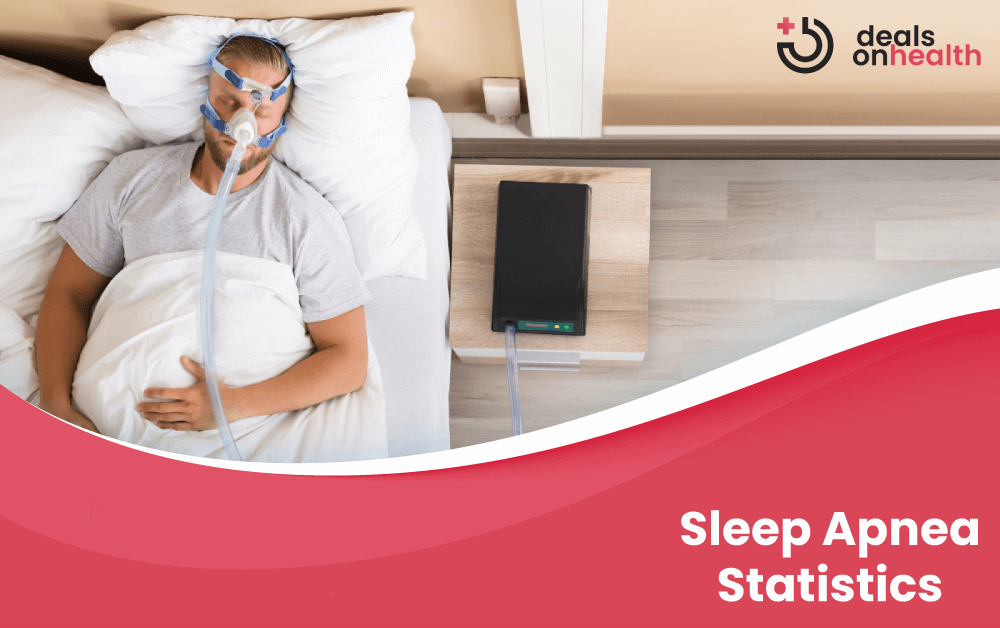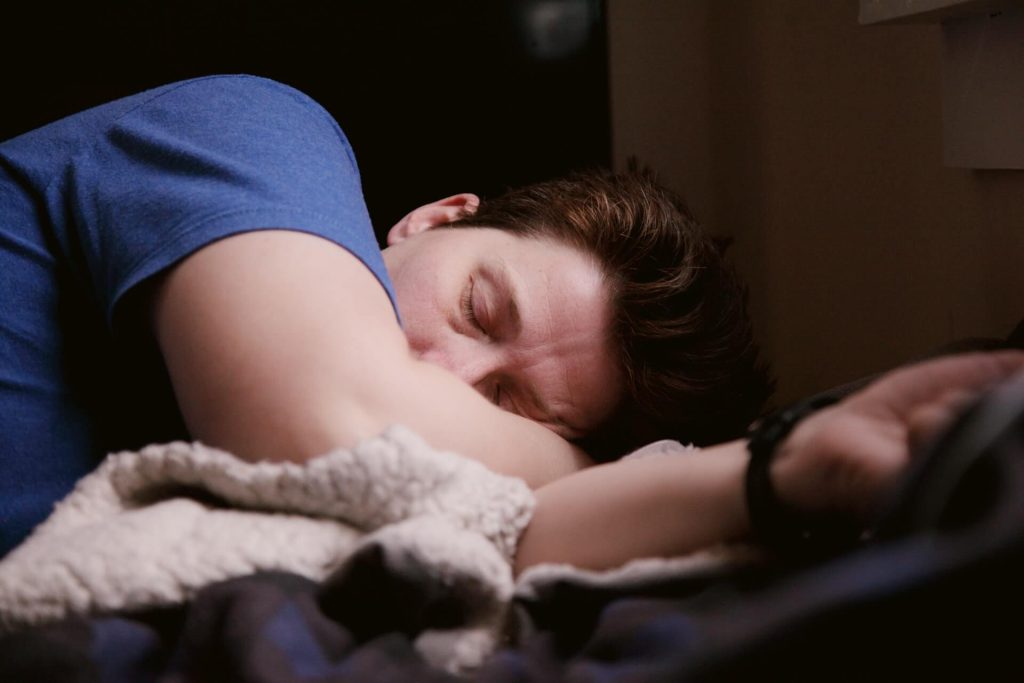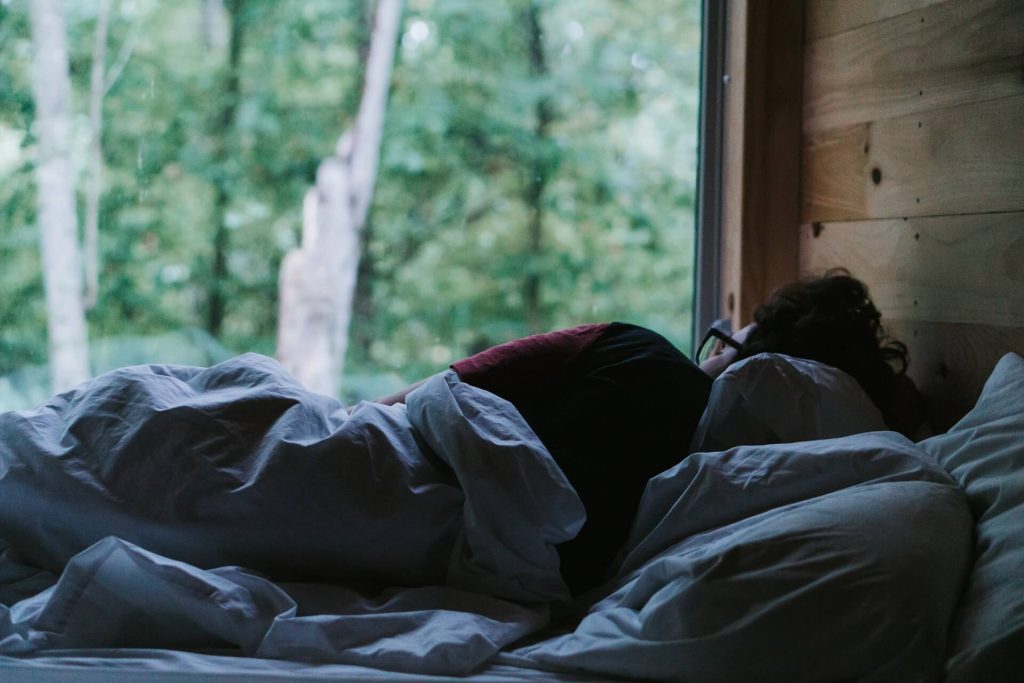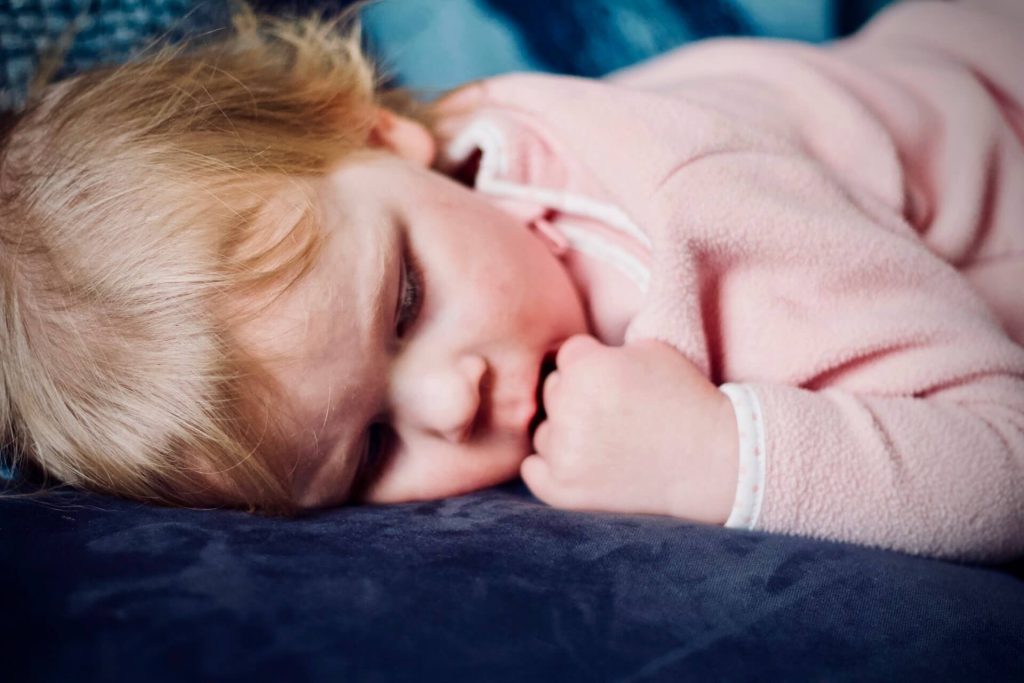
21 Sleep Apnea Statistics: How Dangerous Is It? [2024]
Posted on |
If you snore way too loudly or feel tired after a full night of sleeping, you might have sleep apnea. It’s a sleep disorder where breathing starts and repeatedly stops during sleep, sometimes for longer than 10 seconds.
People usually don’t take it seriously enough, and that’s precisely why you need to know more about what causes sleep apnea, its symptoms, prevalence rate, treatments, and remedies.
So let’s take a peek at these sleep apnea statistics and learn something new.
Key Sleep Apnea Facts and Stats (Editor’s Choice)
- Roughly 18 million Americans suffer from sleep apnea.
- Globally, 100 million people have sleep apnea.
- People older than 40 have a higher chance of developing sleep apnea.
- A person’s breathing can stop for ten seconds or more during an apneic episode.
- 20% of obese people suffer from sleep apnea.
- CPAP therapy is almost 100% successful in treating obstructive sleep apnea.
- The average number of apneic episodes per night is 400.
- The average sleep health index of US citizens is 68%.
General Sleep Apnea Stats

1. Between 50 and 70 million adults in the US struggle with some kind of sleep disorder.
(Sleep Association)
As the sleep disorders statistics show, one in three people has trouble sleeping at some stage of their lives. They can have problems with insomnia, snoring, sleep deprivation, narcolepsy, etc.
2. Approximately 18 million Americans suffer from sleep apnea.
(Sleep Foundation; Sleep Apnea)
According to the American Sleep Apnea Association, this disorder is as common as type 2 diabetes. It can occur at any age, and even children and infants can have sleep apnea.
3. The percentage of people with moderate and severe sleep apnea who aren’t diagnosed is 80%.
(Sleep Foundation; Sleep Apnea)
It’s important to highlight that many patients go undiagnosed and remain untreated due to a lack of awareness by healthcare professionals.
Unfortunately, this disorder can have severe consequences if left untreated.
4. Over 100 million people around the world suffer from sleep apnea.
(ResMed)
Sleep apnea prevalence is constantly increasing due to obesity. Here’s the global prevalence of obstructive sleep apnea in some countries:
- The US: 34% men; 17% women.
- Switzerland: 50% men; 23% women.
- Hong Kong: 9% men; 4% women.
- Brazil: 47% men; 31% women.
- India: 14% men; 6% women.
- Australia: 24% men; 25% women.
5. The VA disability percentage for sleep apnea falls under title 38 CFR § 4.97.
(Cck-Law)
Veterans can have a 0, 30, 50, or 100% rating, depending on the severity of their condition. For example, if a veteran has no symptoms but has sleep apnea diagnosed, their rating is 0%. However, it increases to 30% if they experience daytime sleepiness.
The 50% rating is for veterans who have to use a breathing device, such as CPAP, and the 100% rating is reserved for veterans with chronic respiratory failure with carbon dioxide retention.
6. In the US, roughly 35% of adults generally sleep less than seven hours per night.
(CPAP)
According to sleep apnea statistics for 2021, many people don’t sleep enough primarily because of sleep disorders, such as insomnia or sleep apnea. Furthermore, their sleep quality is poor, and they should see a doctor as soon as possible.
Statistics on Sleep Apnea Regarding Types, Symptoms, and Demographics

7. People older than 40 are a high-risk group, but women are at higher risk only after menopause.
(Mayo Clinic)
Some of the pain medications can worsen central sleep apnea, but the factor which affects both types is being older and being male.
One of the interesting sleep apnea facts is that this disorder is rarer in women, and they’re at higher risk only after menopause. Other potential sleep apnea causes are having a recessed chin, a small jaw, or a large overbite.
8. Smokers are three times more likely to have obstructive sleep apnea.
(Mayo Clinic)
When we’re talking about obstructive sleep apnea, excess weight may lead to fat deposits around the upper airway, restricting breathing.
However, smoking, genetics, nasal congestion, sedatives, tranquilizers, or and excess alcohol can also contribute to its development. If you enjoy drinking alcohol, do so in moderation.
9. 2-9% of Americans have obstructive sleep apnea.
(Sleep Foundation)
Obstructive sleep apnea statistics point out that this sleeping disorder is diagnosed in up to 9% of Americans. Of course, scholars think that the prevalence of this type of sleep apnea is much higher because of the undiagnosed.
10. Approximately 0.9% of adults over the age of 40 have sleep apnea.
(Sleep Foundation)
The prevalence of central sleep apnea is much lower. Because of that, people mostly refer to obstructive sleep apnea if they don’t specify its type.
The difference between these two types is that there’s a problem in the brain when CSA is in question, while physical blockage at the back of the throat leads to OSA.
11. During an episode of sleep apnea, a person’s breathing can stop for ten seconds or even more.
(Hopkins Medicine)
One of the shocking but interesting facts about sleep apnea is that a person can experience not breathing for more than ten seconds when asleep. That’s when reflexes kick and prevent them from suffocating. Nonetheless, they might keep sleeping without being aware of it the following day.
12. 3% of people with average weight have problems with sleep apnea.
(Hopkins Medicine)
Sleep apnea isn’t a big concern for people who aren’t obese, as 20% of obese people suffer from it. The difference in this percentage is immense.
Apart from that, undiagnosed sleep apnea statistics point out that it’s connected to an increased metabolic and cardiovascular health risk.
Sleep Apnea Death Statistics

13. 38,000 people in the US who die of heart disease every year have sleep apnea as a factor that worsens their condition.
(Healthline)
If someone already has heart disease, these frequent episodes of low blood oxygen can lead to sudden death. Nevertheless, the number of deaths due to sleep apnea is difficult to determine because some people die having a heart disease and sleep apnea at the same time.
14. If a person is 60 or older and has more than 20 episodes per hour or if the percentage of oxygen in their body falls under 78%, they can die.
(Healthline)
Sleep apnea deaths statistics reveal that people with sleep apnea have a higher chance of death tied to cardiac complications.
Furthermore, having sleep apnea and atrial fibrillation (irregular heart rhythm) at the same time increases the need for treatment by 40% (or 80%, if sleep apnea is undiagnosed).
Sleep Apnea Rates in Children and Stats About Treatment

15. 10–20% of children who snore have sleep apnea.
(Kids Health)
The signs of sleep apnea in adults and children are somewhat similar, but children have more potential symptoms. They can also have behavioral or learning problems and are often hyperactive throughout the day.
The leading cause of sleep apnea in children is excess weight. Other causes include a tumor or a growth in the airway and some mental disorders, such as Down syndrome or Pierre-Robin syndrome.
16. Only 3% of people under the age of 45 have at least ten apneic episodes.
(Snore Lab)
Compared to the mentioned age group, the percentage of those aged 65 or over with the same number of episodes is 18%. Also, the percentage of young people who snore (17-29 years old) is fewer than 10%. On the contrary, over 40% of those over 50 snore.
17. CPAP therapy is nearly 100% successful in treating obstructive sleep apnea.
(Alaska Sleep)
CPAP statistics show that almost all the alternative treatments are either very similar to CPAP or they’re about helping people to get used to this device. Wearing a CPAP mask can be very uncomfortable for some patients. Even though it might be difficult to use in the beginning, the result is worth the struggle.
18. Maxillomandibular (jaw) advancement may cost $80,000 to $100,000, while minor nasal surgeries can run up to $10,000.
(Healthy Sleep)
One of the facts about sleep apnea that should be kept in mind is that surgeries are expensive. The costs can vary depending on the type of surgery and other factors.
Some of the surgery types are maxillomandibular advancement (MMA), tracheostomy, and hypoglossal nerve stimulation. Other procedures, such as reduction of the size of the tongue and relocation of the hyoid bone, can also help.
Other Notable Sleep Apnea Facts and Statistics

19. The average number of apneic episodes is 400 per night.
(Hopkins Medicine)
Obstructive sleep apnea is classified by its severity: it can be mild, moderate, or severe. There is a measuring system called apnea-hypopnea index (AHI), and it measures the number of breathing pauses per hour.
20. Having mild sleep apnea means having AHI between 5 and 15.
(Hopkins Medicine)
If the sleep apnea AHI number is between 15 and 30, then it’s moderate, but if a person experiences more than 30 episodes per hour, they have a severe case of sleep apnea.
21. A patient can experience an episode 30-40 times per hour, all night.
(Mayo Clinic; Cardio Smart)
Having more than five apneas per hour is enough for a possible diagnosis, and it prevents from entering a deep sleep phase. However, 25% of people don’t feel sleepy the next day, making it much more difficult to diagnose and treat the disorder.
22. The average sleep health index of Americans is 68%.
(Sleep Foundation)
The sleep health index is the National Sleep Foundation’s composite index of sleep duration, sleep quality, and disordered sleep.
Only 10% of American adults found sleep more important than other aspects of their life, such as socializing, work, etc., and 35% of Americans found fitness and nutrition more important than sleep.
Sleep Apnea Statistics – The Final Word
This sleeping disorder is more common than we think, and it can be perilous if untreated. The main problem is that many people are not even aware that they suffer from sleep apnea because they don’t feel sleepy or irritated.
Luckily, there are ways to help alleviate the symptoms of sleep apnea or even prevent it. There are all kinds of treatments for it, such as other devices, surgeries, or natural remedies. You can also quit smoking (or eventually switch to e-cigarettes) and start doing yoga.
Being informed well enough and knowing what to do if someone has sleep apnea can vastly contribute to a person’s health.
Frequently Asked Questions (FAQ)
Although anyone can suffer from sleep apnea, men and people over 40 are at a higher risk. Also, various factors can contribute to the development of this sleep disorder. Some of them include smoking, excessive alcohol usage or eating, etc. Also, sleep apnea is more diagnosed in women after menopause.
What percentage of the population suffers from sleep apnea?
It’s estimated that 2-9% of Americans have obstructive sleep apnea, while only around 0.9% of people over 40 suffer from central sleep apnea. These numbers are probably even higher because of undiagnosed cases.
Sleep apnea is rather common. It’s not easy to spot symptoms because someone else needs to be there while we sleep. The only symptom that’s easy to distinguish is fatigue, but people usually connect it with something else. That’s why this disorder is considerably undiagnosed.
What is the best position to sleep with sleep apnea?
It’s best to sleep on your side if you have problems with sleep apnea, especially on your right side. It reduces or prevents snoring and improves blood circulation. Don’t lie on your back because it can lead to breathing difficulties.
How many apneas per hour is severe?
Having 30 or more apneas is considered severe, while mild sleep apnea is having between 15 and 30 apneic episodes If the number of episodes is between 5 and 15, then mild sleep apnea is in question.
Is having sleep apnea a disability?
According to The Social Security Administration (SSA), sleep apnea is no longer listed as a disability. Nevertheless, if a person has heart problems, mental deficits, or breathing disorders because of sleep apnea, it counts as a disability. Sleep apnea statistics also reveal that veterans can score a 100% disability rating if they have a chronic respiratory failure.
- Alaska Sleep
- Cardio Smart
- Cedars-Sinai
- Cck-Law
- Cheap CPAP Supplies
- CPAP
- Disturbmenot
- Getqardio
- Healthline
- Healthline
- Healthy Sleep
- Hopkins Medicine
- Kidshealth
- Mayo Clinic
- NCBI
- Resmed
- Sleep Apnea
- Sleep Association
- Sleep Apnea
- Sleep Foundation
- Sleep Foundation
- Sleep Apnea
- Snore Lab
- Very Well Health
- Webmd
